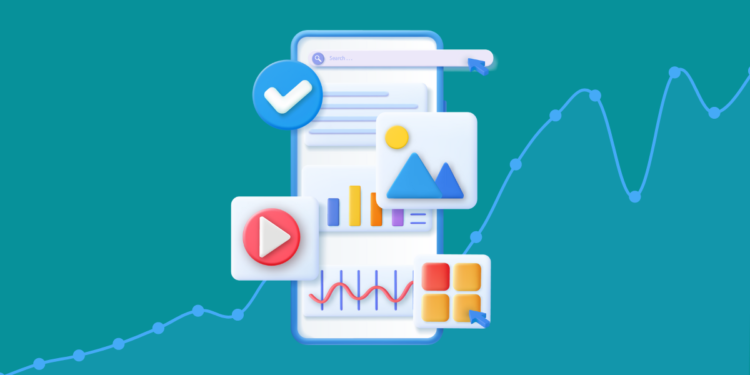Introduction
SEO isn’t dead—far from it. In 2025, a smart SEO keyword strategy can be the difference between a website buried on page five of Google and one ranking at the top for high-converting traffic. But here’s the twist: search engines are no longer just scanning for exact-match keywords. They now prioritize user intent, content context, and AI-driven signals.
If you want to see your website traffic explode, you need a modern approach. That’s why we’ve put together 7 actionable SEO keyword strategy hacks designed to give you a competitive edge this year. These hacks are simple, effective, and ready for immediate implementation.
7 SEO Keyword Strategy for Website Traffic
Driving website traffic in 2025 requires a smart, actionable SEO Keyword Strategy. Here are 7 proven strategies that will help you attract more visitors and improve organic rankings.
Hack 1 – Focus on Search Intent, Not Just Keywords
It’s time to stop obsessing over search volume alone. Modern SEO demands understanding why users search for something. Are they looking to learn, compare, or buy?
- Informational intent: Users want to learn. Example: “What are Top Enterprise SEO Tools in 2025.”
- Navigational intent: Users are looking for a specific site or brand. Example: “Ahrefs login.”
- Transactional intent: Users are ready to take action. Example: “Buy SEO tool subscription.”
Pro tip: Use Google Search Console, SEMrush, or Ahrefs to see which queries drive traffic to your pages. Align your keywords with intent, and watch engagement—and conversions—rise.
Hack 2 – Long-Tail Keywords Are Your Hidden Goldmine
High-volume keywords are tempting but competitive. Long-tail keywords are the real traffic generators because they attract highly targeted users.
- Example: Instead of “SEO strategy,” try “best SEO keyword strategy hacks for small businesses 2025.”
- These keywords often have less competition but higher conversion potential.
Tools to find them: AnswerThePublic, Ubersuggest, Google Keyword Planner. Implementing long-tail keywords strategically can turn casual visitors into loyal customers.
Hack 3 – Spy on Competitors to Uncover Keyword Gaps
Your competitors have already done part of your homework. Analyze their top-performing pages to find keywords they rank for that you don’t.
- Tools: Ahrefs, SEMrush, Moz.
- Actionable step: Identify content gaps and create better, more in-depth articles targeting those keywords.
Bonus: Look for keywords your competitors are missing entirely. These gaps are your hidden traffic opportunities.
Hack 4 – Leverage LSI and Semantic Keywords
Google no longer just matches exact words. It uses context and semantic relationships to understand content. Enter Latent Semantic Indexing (LSI).
- LSI keywords are related terms that give your content depth.
- Example: For “SEO keyword strategy,” LSI keywords could include “organic traffic growth,” “search intent optimization,” and “keyword clustering.”
Tools: LSIGraph, SurferSEO, and even ChatGPT can help cluster keywords for content planning. Proper semantic optimization boosts your ranking potential and keeps your content relevant.
Hack 5 – Optimize for Voice and AI Search
Voice assistants like Siri, Alexa, and ChatGPT-driven search are changing how users find information. Queries are longer and more conversational.
- Optimize using natural language keywords and question-based phrases.
- Example: Instead of “SEO tips,” use “How can I improve my SEO keyword strategy in 2025?”
- Aim for featured snippets and position zero on Google, as these dominate AI responses.
Voice and AI search optimization is no longer optional—it’s essential for forward-thinking SEO strategies.
Hack 6 – Refresh and Repurpose High-Performing Content
Not all content needs to be new. Often, your existing pages can be optimized for more traffic:
- Update old posts with current data and trends.
- Add new keywords or sections targeting long-tail or semantic terms.
- If you need to generate fresh articles on similar topics quickly, you can use an AI Blog Writer to produce new, high-quality blog content efficiently.
This approach is fast, cost-effective, and results-driven, especially when paired with proper keyword analysis.
Hack 7 – Track, Test, and Tweak Continuously
SEO is not a set-and-forget strategy. Continuous tracking and optimization are critical:
- Monitor performance using Google Analytics, Search Console, and Ahrefs.
- Track keyword rankings, CTR, and engagement metrics.
- Test variations of meta titles, descriptions, and content updates to see what drives results.
The best SEO keyword strategy is iterative. The more you analyze and adjust, the better your results become.
Conclusion
Boosting your website traffic in 2025 requires a modern approach to SEO that goes beyond just targeting high-volume keywords. By focusing on search intent, leveraging long-tail and semantic keywords, analyzing competitors for content gaps, optimizing for voice and AI-driven search, refreshing existing content, and continuously tracking and tweaking your strategy, you can create an SEO keyword strategy that consistently drives results.
Implementing these seven hacks will not only help your website rank higher in search engines but also attract more qualified, engaged visitors who are ready to take action. Start applying these strategies today and watch your website traffic grow faster than ever.












































































